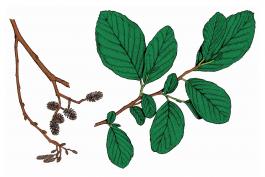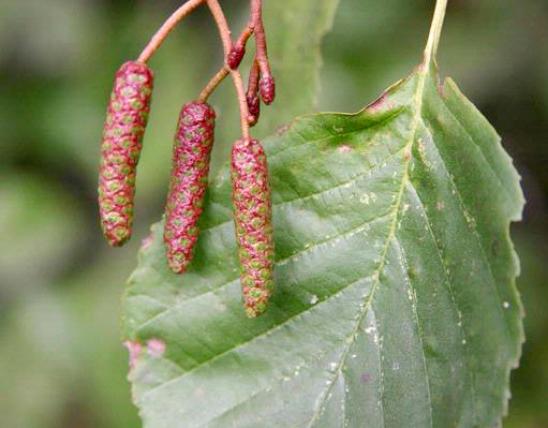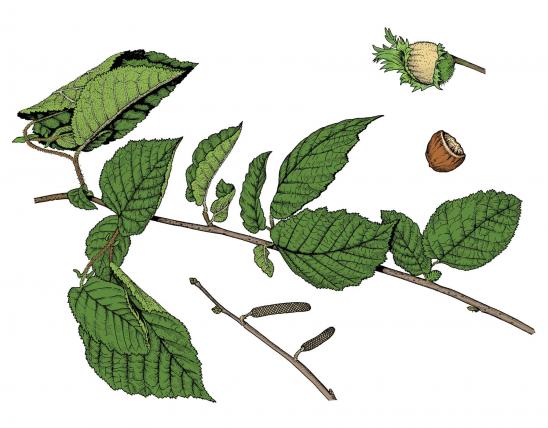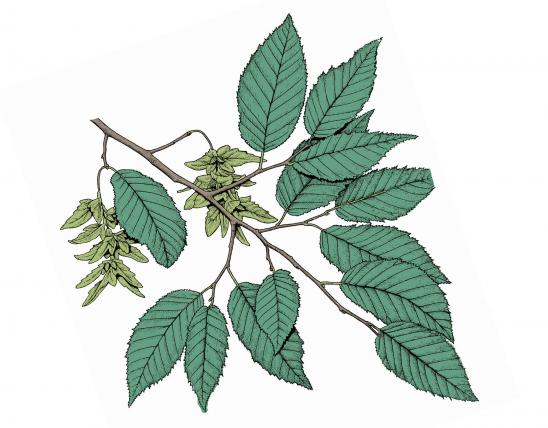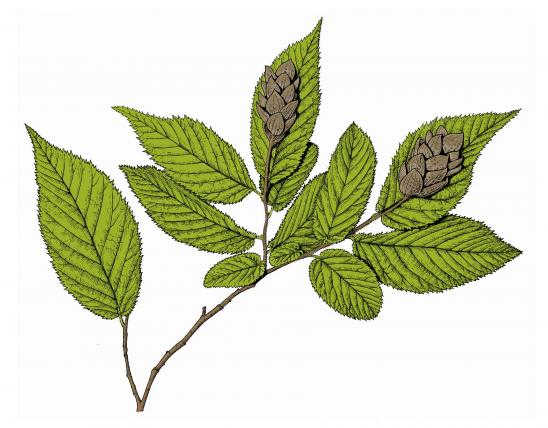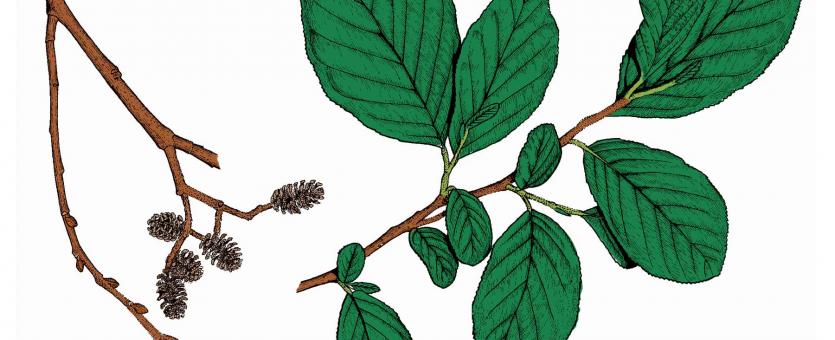
Common alder is an irregularly shaped shrub or slender small tree up to 20 feet tall.
Leaves alternate, simple, 1–5 inches long, 1½–2½ inches wide, broadest at or above the middle; margin with blunt or rounded teeth; upper surface dark green; lower surface dark green, somewhat hairy.
Bark is reddish-brown to brown, with horizontal pores, with narrow grooves starting as a vertical row of dots and eventually opening to a narrow crack.
Twigs are reddish-brown to brown, hairy at first, smooth later, slender, flexible.
Flowering is in March–April. Flowers are in catkins, male and female on the same twig; petals are lacking. Male catkins in clusters of 2–5, cylindrical, drooping; female catkins in clusters of 2–3, green to purple.
Fruit develops September–October, about ¾ inch long, oval, shaped like a pinecone, having a cluster of woody bracts each below a nutlet.
Similar species: Common alder is Missouri's only native alder. European alder (Alnus glutinosa) is widely planted in Missouri, but it has only been known to escape cultivation in our state in one locality (in Greene County). If you encounter an alder in the wild, it is most likely common alder.
Height: to 20 feet.
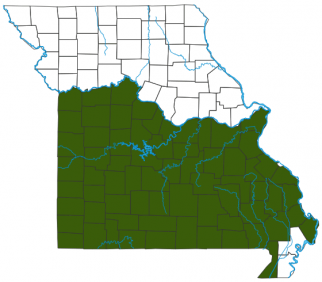
Throughout the southern half of the state, excluding the far southeastern edge of the Bootheel.
Habitat and Conservation
Occurs along stream banks, springs, spring branches, and fens.
Human Connections
The bark of alder has a long history of various medical uses, going back to Native Americans in presettlement days. The dried female catkins, which look like tiny pinecones, are useful in craft projects. They are also sometimes plated with gold and silver and used in jewelry.
Ecosystem Connections
The buds, flowers, and fruits are eaten by wildlife. The thick, dense mat of roots prevents erosion while also enriching the soil in a way similar to that of legumes.

